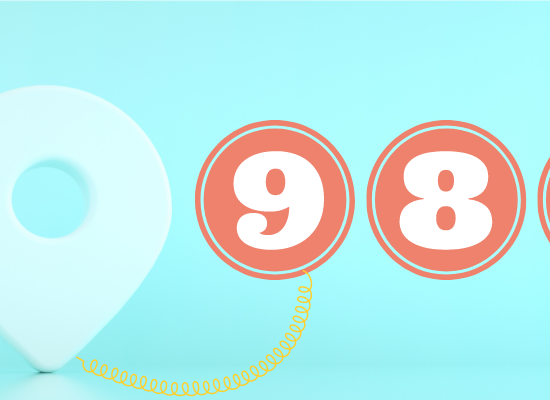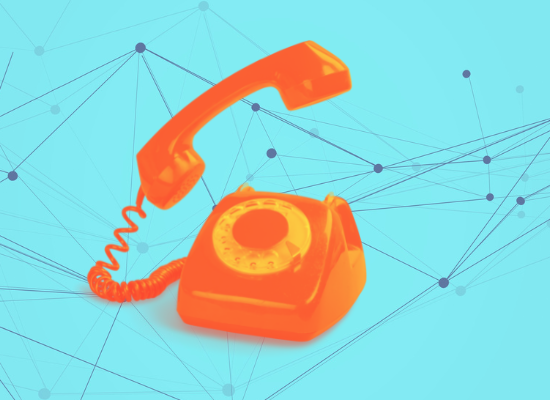
Stephanie Hepburn is a writer in New Orleans. She is the editor in chief of #CrisisTalk. You can reach her at .
It’s April 2020–the early days of the Covid pandemic and the height of lockdown in Georgia. A teen who is suicidal shows up to an emergency department twice, but no facility in the state will take him because he has Covid. He’s asymptomatic and will test positive for the next four months.
Debbie Atkins, director of Crisis Coordination at the Georgia Department of Behavioral Health and Developmental Disabilities (DBHDD), didn’t want him to fall through the cracks. He needed care, and she was going to help him. “It meant getting creative,” she says. Having an existing crisis services registry allowed her to do just that.
The Georgia Crisis and Access Line or GCAL (1-800-715-4225) is a call center integrated into the local healthcare system with 24-hour mobile crisis response coverage within 100 miles of every community. The system allows Atkins and her DBHDD colleagues to see all available beds. “Having an instant snapshot during Covid helped remove the guesswork,” she says. “We always know in real-time what’s available and what’s not.”
When all facilities denied the teen, including private hospitals, Atkins didn’t give up. She called a crisis unit on the other side of Georgia and asked the psychiatrist to take the teen’s case. “He was chronically suicidal, and isolation during lockdown didn’t help,” says Atkins. The doctor said yes, treating the teen pro bono and calling him twice a day through telehealth so he could remain safely at home.
This continued for two weeks until the youth’s private insurance found a therapist and psychiatrist in his area to meet with him. Atkins notes this gave the teen daily connections that “wouldn’t have happened otherwise.”
Judy Fitzgerald, the commissioner of DBHDD, says Georgia’s comprehensive system allowed them to react quickly to the pandemic, taking beds offline to fulfill physical distancing requirements and creating crisis unit pods. Having an adaptive system also meant they could spend their energies elsewhere, like finding PPE for their frontline healthcare workers.
However, the Georgia commissioner is quick to point out that the state didn’t build its behavioral and developmental disabilities crisis system overnight, more like it was 20 years in the making. Much of the initial scaffolding resulted from a 2010 settlement agreement with the United States Justice Department (DOJ).
The two parties agreed upon a tiered, five-year approach, with incremental deadlines, which was critical for Georgia’s success and could serve as a model for states as they build out their systems to prepare for 988. The three-digit number for behavioral health emergencies must be available nationwide no later than July 16, 2022.
In 2009, the United States Department of Justice sued Georgia for violating the Americans with Disabilities Act (ADA) and the 1999 Supreme Court’s decision in Olmstead v. L.C.
The plaintiffs Lois Curtis and Elaine Wilson cycled in and out of hospitalization in Georgia because there was insufficient support for people with mental or developmental disabilities outside of an institutional setting. They sued Tommy Olmstead, who was commissioner of the Department of Human Resources at the time—this was before DBHDD became a standalone agency in 2009—for care in a community-based setting. The Supreme Court held that unjustified segregation of people with disabilities is discrimination in violation of Title II of the ADA.
“The DOJ alleged,” says Fitzgerald, “that people with serious and persistent mental illness or intellectual and developmental disabilities were essentially stuck in an institutional setting because our community system wasn’t robust enough.”
Atkins adds that the state didn’t have Assertive Community Treatment (ACT) teams or supported housing. “People who at baseline had active symptoms of psychosis lived in hospitals,” she says. “We were missing the entire infrastructure outside of the hospital to support individuals who needed higher-end services to remain in the community.”
Legislators agreed. Gov. Sonny Perdue and Gov.-elect Nathan Deal embraced the settlement agreement as an opportunity to build a recovery-focused and service delivery system integrated with community-based services. In fact, in 2010, Perdue was quick to note that this was just the start of what the state hoped to accomplish. He said Georgia was “not crossing the finish line” but “beginning a journey” toward improved services for people with mental illness, substance use disorders, and developmental disabilities.
The settlement agreement spelled out specific services Georgia needed to build to prevent unnecessary hospitalizations and allow people to be served in their communities. Some of these services included ACT teams, community support teams, and mobile crisis teams. “This allowed people to have improved access to person-centered care,” says Fitzgerald. “No longer was everyone just directed to the front door of the hospital.”
After Georgia entered the settlement agreement, DBHDD presented the legislature with information on supports and services needed to address system gaps and improve quality of care. The legislature has been staunch supporters of DBHDD and the people it serves. “The legislature has shown support year-after-year,” says Fitzgerald. “They’re strongly committed to ensuring that people have access to community-based services.”
Though the agreement included 25 components for expanding and integrating the crisis system, the DOJ didn’t expect Georgia to do so overnight but at staggered and specific dates. For example, Georgia agreed to stop admitting people with developmental disabilities to their state hospitals by July 1, 2011. But it had four additional years to transition those already in the state hospital to integrated settings that fit their needs. The state also agreed to have six mobile crisis teams up and running by July 1, 2012, to respond to people with developmental disabilities experiencing a crisis anywhere in the community. However, it had three more years to make mental health mobile crisis teams available in every county.
The DOJ gave Georgia just under five years to integrate 9,000 people with serious and persistent mental illness into the community. The population included people in state hospitals, those with frequent emergency room or hospital stays, and those who were homeless or released from the criminal justice system.
Atkins notes that even before the 2010 settlement agreement, there was movement in the state toward improved crisis care—propelled by Hurricane Katrina five years prior. After the storm devastated the Gulf Coast, many evacuees went to shelters in Atlanta. While there were a few call centers at the time, people new to the city didn’t know what numbers to call or how to navigate the crisis system. “It wasn’t centralized,” says Atkins. “If a person called the 800-number but was across the state, they didn’t get access.”
In response, Georgia created a unified system in 2006 that became GCAL. It was a traditional call center that focused on diversion and outpatient appointments. The settlement agreement in 2010 moved the marker even further. Atkins was a regional services administrator when the first state hospital was closed. Over the next five years, she and her colleagues added integrated mobile crisis teams across the state, crisis stabilization units, contract beds, and peer respite centers. She’d like to expand the latter with 988.
“We see value in the entire continuum, but funding was limited,” she says. “We were given 20 ACT teams and 2 new Crisis Stabilization Units. The elements of the agreement were very specific and reflected the innovations of the time but didn’t include strategic planning.”
A year into the settlement agreement, Atkins and her colleague Monica Johnson, who is now the Behavioral Health Division director at DBHDD, began diagnostics to determine what was working and what wasn’t. GCAL was in place, but the bed registry was made up of whiteboards and spreadsheets. “We really couldn’t control the front door to make sure people were getting the right level of care at the right time,” says Atkins.
The settlement agreement also required Georgia to build clinically staffed crisis services centers. Atkins notes that she and her colleagues didn’t exactly know what they were. “We put up our best guess,” she says. Over time, though, the team realized the centers didn’t sufficiently connect to other services, so they developed a new behavioral health crisis center model. It includes three components: a walk-in urgent care, a temporary observation unit, and a crisis stabilization unit.
As service demands increased, Atkins and her team became painfully aware that the bed registry’s whiteboard approach was insufficient, so they developed a centralized bed board system. “It was a bit like a spreadsheet in the sky,” laughs Atkins, “but people could log-in and see availability.” Today, with proprietary software developed in partnership with Behavioral Health Link (BHL), GCAL has real-time access to available crisis and detox beds throughout Georgia. It also provides phone, text, and chat intervention services, follow-up, can make urgent and emergent appointments for callers, and, if needed, can use GPS to dispatch mobile crisis teams. The crisis and access line is not simply a hotline, says Atkins, but a comprehensive and coordinated crisis services hub that gives people “a single point of entry to the behavioral health and developmental disabilities crisis systems.”
The GCAL system has allowed the DBHDD team to be responsive and shift in crisis times like during Covid. However, says Fitzgerald, gaps remain. The settlement agreement focused on crisis care, leaving out other parts of the system. “It infused the state with much-needed community-based services that helped get dedicated resources and attention to people at the deepest end of the system,” she says, “but we have to do that for our entire continuum, not just the crisis system.”
“Ultimately, a crisis system is only as good as the full continuum of care, including outpatient services.”
GCAL is a striking match for the vision of 988, says Fitzgerald, with people paired with appropriate services when they need it, diverting them from the emergency room, inpatient hospitalization, and the criminal justice system. The crisis and access line has reduced wait times and costs and improved people’s access to the level of care they need when they need it. The system also provides real-time data that DBHDD can scrutinize for abandonment rates, answer speed, bottlenecks, delays, and hospital diversions, allowing them to continually improve upon it.
However, Fitzgerald points out there’s just one issue: no one knows how much 988 will increase demand. She says Georgia, because it already has a statewide system, won’t likely be in the high-volume increase category as defined by the Vibrant Emotional Health projections, the nonprofit organization that runs the SAMHSA-funded National Suicide Prevention Lifeline. However, it’s a non-Medicaid-expansion state whose purview has always been uninsured populations. “We are preparing for moderate projections,” she says, “but we know that to divert people from having a crisis, we need to beef up outpatient as much as crisis care.”
While there’s movement in behavioral health to get away from silos, it’s a recurrent theme. The primary driving force, notes Fitzgerald, is that funding is typically designed to address a particular problem, and communities want to solve their system pain points. She says to combat fragmentation, leaders must think holistically. “If you turn the dial in one area, you need to examine the potential unintended consequence and ballooning that might happen elsewhere in the system.”
There’s no switch to flip on July 16, 2022, that will make states, including Georgia, ready for 988 without laying down sufficient groundwork beforehand. It requires “thinking big picture” on how volume increases might affect the behavioral healthcare system and intersecting services like long-term supported housing. “We have a good head start, but we have a lot of work to do in Georgia to be ready,” says Fitzgerald.
What might present most challenging when 988 rolls out is the state’s behavioral health workforce scarcity. “We need improved pay to help with labor shortages,” says Fitzgerald, “and that requires funding.” Georgia is trying to attract more psychiatrists through the Gateway Behavioral Health psychiatry residency program in Savannah that launched in 2019. The aim is to train and keep the specialists within the state.
A one-time solution can’t fix crisis care. While the settlement agreement was forward-thinking in 2010, it also left out the substance use disorder population. “We have a dearth of substance use services because the agreement focused on mental health,” says Fitzgerald. Also, aspects of the agreement have aged out. For example, the agreement identifies people with mental illness and those with intellectual and developmental disabilities as two distinct populations with two separate service delivery systems. Over time, Fitzgerald and her colleagues found these distinctions haven’t been beneficial when serving people in crisis. “What we need to prioritize is responsiveness to people,” she says.
As states face infrastructure challenges and focus on the technological possibilities of 988, Fitzgerald says it’s easy to forget a crucial element: the people doing the work. “It’s people who put the blood, sweat, and tears into mobilizing change,” says Fitzgerald. People like Atkins who found care for a teen in crisis when options were nominal. “Technology and innovations are only as good as the people involved. In the end, the most meaningful crisis response is human connection.”









